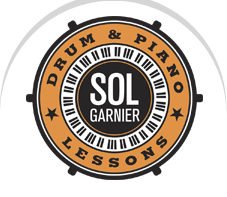When I get a brand new beginner on drums I tell her to grab her stick the way she prefers and then try to hit the hi hat or the snare. I do not give more direction than that. I let them find their marks with their grip. I know they usually are eager to get started with the fun stuff like going around the kit or the basic rock rhythm. So, I let them hold the stick the way they want to. Later, once we are in the deep of the lessons, which could be two weeks later or two months later, I introduce the first element of the grip, how relax the fingers need to be, how the wrist should move.
When I was fresh out of college, I used to spend quite a bit of time on how to hold the sticks. It would be at least a quarter of the time of our first encounter.
Not anymore. I want the first lesson to be something they can enjoy, and even be proud of. I also want them to get a little relationship going between their hands, the sticks and the surface they hit. That’s already a lot of informations for their brain. I know that this blog is read by some serious drummers out there. But you have to go back to the very beginning and imagine the first time you tried to hit a drum. You don’t remember? Of course not, that experience pre-dates the dinosaurs. Still, I see them very often, those brave souls that have decided to undertake the study of this instrument. They want to learn, they are ready to be sponges of all the data I can provide but it is simply too much. They come to my first lesson and their whole body and mind is already solicited by both hands and feet going at the same time, at the same time as the mind trying to piece all of it together to make somewhat of a coherent beat. Big job right there.
So, I take my time now. I know how difficult it is to understand the relationship between the grip and the surface hit. It is so subtle, so delicate, so precise. It asks a bit of regular practice too. Single stroke roll, double stroke roll everyday. And most beginners do not know if they want to pursue this noble art. So, I use psychology to teach rudiments as much as the the technique itself. But I always recognize when the time is right. They would have bought a drum set or come fully prepared for a few lessons.
The only thing I would correct with their grip at the very beginning is if I see something blatantly damaging for their hand or forearms. I then give a few pointers and guide them towards a healthy practice. Eventually, I might even send them a link to a video I made that explains everything. Here it is:
